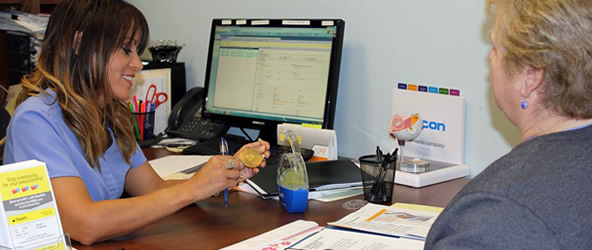Crystalens or Multifocal IOL?
What is a Standard Intraocular Lens Implant?
When cataract surgery is performed, the natural lens in the eye, which has become cloudy over time, is replaced with an intraocular lens implant (IOL). There are now a variety of lens implants used in eye lens replacement surgery. A standard lens implant, which is generally fully covered by insurance, provides clear vision but usually requires that patients continue to wear glasses after surgery. A standard IOL can be set for near or far, but does not have a range of focus. Glasses can be used postoperatively to allow for a full range of distance, intermediate, and near focus.

What is a Premium lens implant?
Those patients who wish to be more independent of glasses after cataract surgery may wish to consider an alternative to the standard IOL. A premium IOL is a lens implant designed to lessen dependence on glasses. For patients who wish to be able to focus both near and far without needing glasses, options include multifocal and accommodating IOLs.
What is an Accommodating IOL?
The Crystalens is the only accommodating IOL available for eye lens replacement. Unlike the multifocal IOLs, the Crystalens has a single power throughout the lens implant. The lens provides range of focus by using the tiny muscles in the eye, and working similarly to the natural lens. The muscles in the eye cause the lens to flex slightly, allowing a range of vision so that the patient can see near, far and intermediate distances without glasses.
What is a Multifocal IOL?
A multifocal IOL allows one to see both near and far out of the eye. There are two multifocal IOLs being used in the Unites States, the Restor IOL and the Tecnis IOL. They are made by different manufacturers, but both are designed with concentric rings of different lens power. The different lens powers bend light rays that enter the eye differently so that the patient can see near, far and intermediate objects without glasses.
Do the Risks Vary Depending on the Type of Lens?
The cataract surgery procedure is the same with any of these implants as it is with a standard IOL. The cataract is removed, and the new intraocular lens implant is put in its place. The risk at the time of surgery is about the same, regardless of whether a standard, multifocal, or accommodating IOL is used. The length of the procedure is no different. Recovery time is also about the same, but with the multifocal and accommodating IOLs it can take a little time for the patient to adjust to the new IOL and to achieve the full range of focus. The brain has to adapt to the visual input from the lens, and it may take a few months for the full range of focus to be achieved. The patient will be very functional within a couple of days after surgery (often the next day), but the reading vision will continue to improve as the patient adapts to the new lens. During this time, over-the-counter readers can be used as needed, but we encourage patients to try to use them as little as possible to adapt more quickly to the IOL.
The multifocal IOLs can produce some glare with night driving, but this is usually minor and tends to diminish over time. Achieving reading vision without glasses is a little less dependable with the Crystalens IOL than with the multifocal IOLs, and that over the counter readers may be needed a little more often.
For more detailed information on cataracts, cataract surgery, and different types of lens implants please select a topic below:

